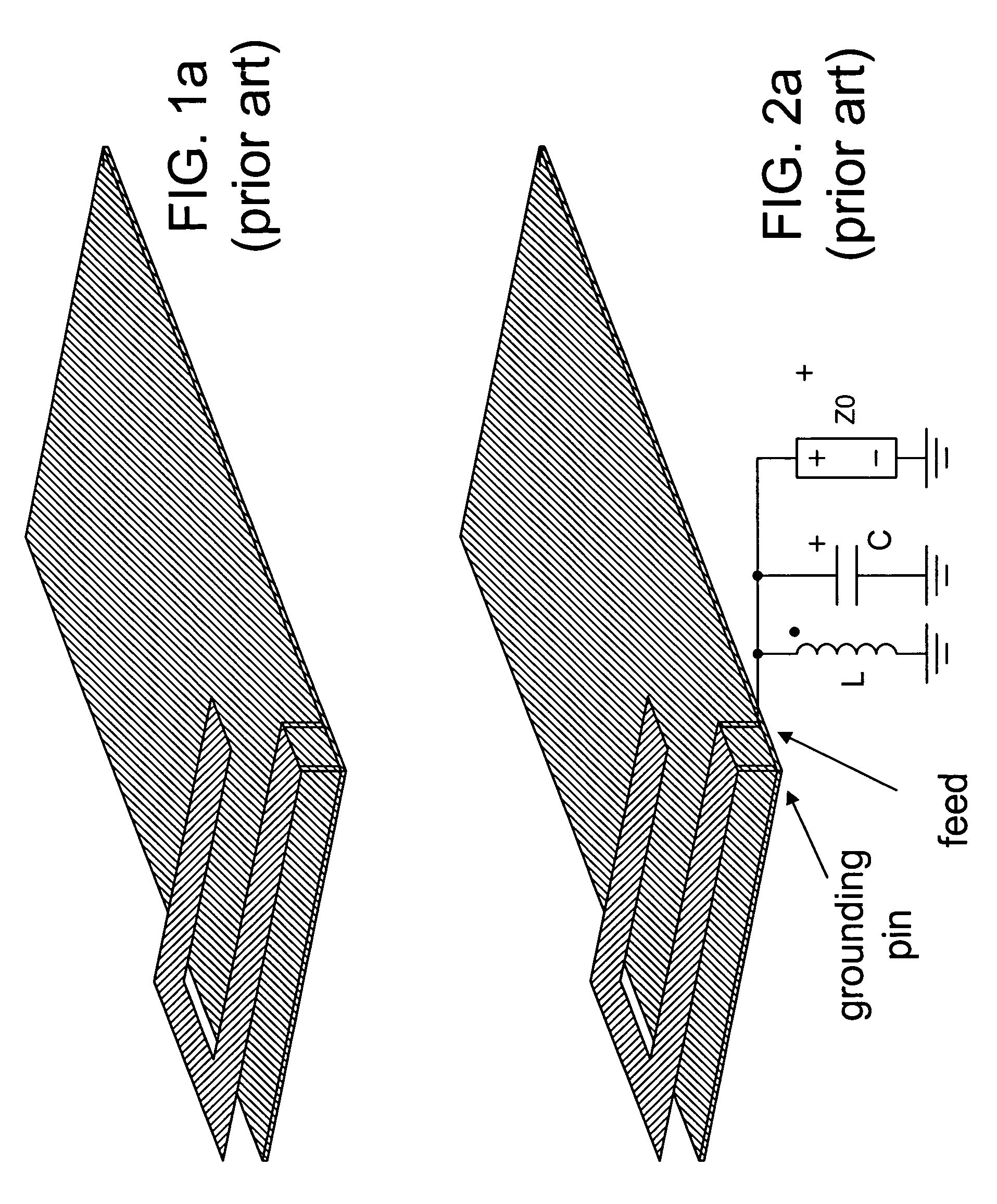Dual-resonant antenna
a dual-resonant, antenna technology, applied in the direction of resonant antennas, radiating elements, elongated active elements, etc., to achieve the effect of increasing the bandwidth of series-resonant antenna elements
- Summary
- Abstract
- Description
- Claims
- Application Information
AI Technical Summary
Benefits of technology
Problems solved by technology
Method used
Image
Examples
Embodiment Construction
[0023]A conventional single-resonant PIFA type antenna (see FIG. 1a) has a low inherent bandwidth. A typical response of the PIFA type antenna is shown in FIG. 1b. It is possible to widen the bandwidth of a single-frequency, single-resonant PIFA type antenna by adding a parallel resonant network at the feed point of the PIFA, as shown in FIG. 2a. However, the PIFA must be modified to have about 20 ohms real impedance at the center frequency, as a simple resonance circuit cannot transform the impedance level of the antenna at the series-resonant frequency. This means that the impedance of the matched antenna on the series resonant (center) frequency is the same as the impedance of the antenna element itself on the series resonant frequency. This limits the use of a simple resonant circuit on an antenna element whose impedance level is moderate (˜20 ohms) at the center frequency. A typical response of the modified PIFA plotted on a Smith Chart is shown in FIG. 2b. The desired dual-res...
PUM
 Login to View More
Login to View More Abstract
Description
Claims
Application Information
 Login to View More
Login to View More - R&D
- Intellectual Property
- Life Sciences
- Materials
- Tech Scout
- Unparalleled Data Quality
- Higher Quality Content
- 60% Fewer Hallucinations
Browse by: Latest US Patents, China's latest patents, Technical Efficacy Thesaurus, Application Domain, Technology Topic, Popular Technical Reports.
© 2025 PatSnap. All rights reserved.Legal|Privacy policy|Modern Slavery Act Transparency Statement|Sitemap|About US| Contact US: help@patsnap.com



